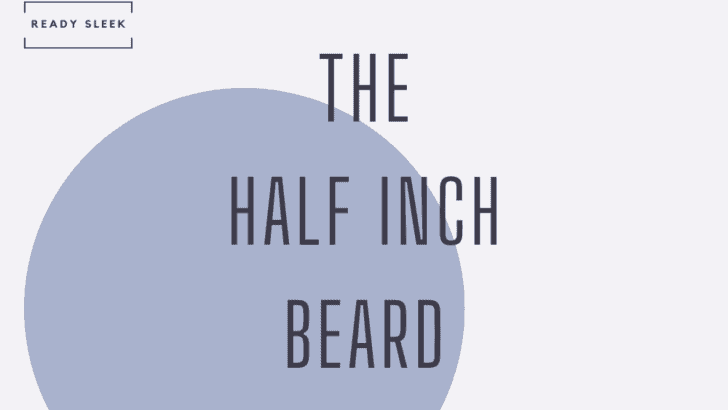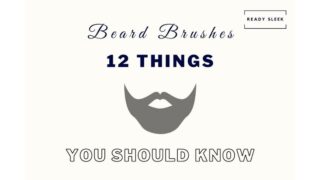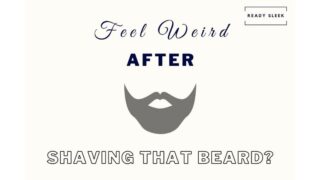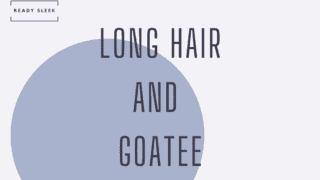When you’ve grown this length of facial hair, you can safely say that you’re out of the stubble phase and well into “short beard territory”.
The half-inch beard is long enough to be very noticeable but still short enough to remain relatively low maintenance and subtle.
You’re about to learn everything you need to know about it.
It’s pretty simple – you need to know approximately how long it’ll take to grow, what styles you can try with this length, as well as a few basic but crucial grooming tips.
If you’re on the fence about whether this may be the length for you, by the end of this article you should have no doubt in your mind either way.
Let’s get to it.
How Long Does A Half-Inch Beard Take To Grow?
The half-inch beard will take around 4 to 5 weeks to grow, assuming you start off from a clean-shaven face.
This is, of course, an estimate. Some men will outpace it, while others might lag behind a little.
But on average, 4 to 5 weeks is a pretty safe estimate.
In other words, it doesn’t take long.
But those weeks may seem like ages as you’re battling through a pretty awkward phase of beard growth.
A half-inch beard amounts to approximately 12.5mm worth of facial hair, to be precise.
It may not seem like much, but as heavy stubble is 5mm at most, it’s definitely more than long enough to be considered a proper short beard.
Now that we’ve got the fundamentals out of the way, let’s get to the fun part.
5 Half-Inch Beard Styles To Try Out
The beauty of short beards is that they give you a bit more versatility than stubble does. You’re able to vary the length to add some contrast and also shape it in ways you wouldn’t be able to otherwise.
Use this list as a source of inspiration.
1. Short Boxed Beard
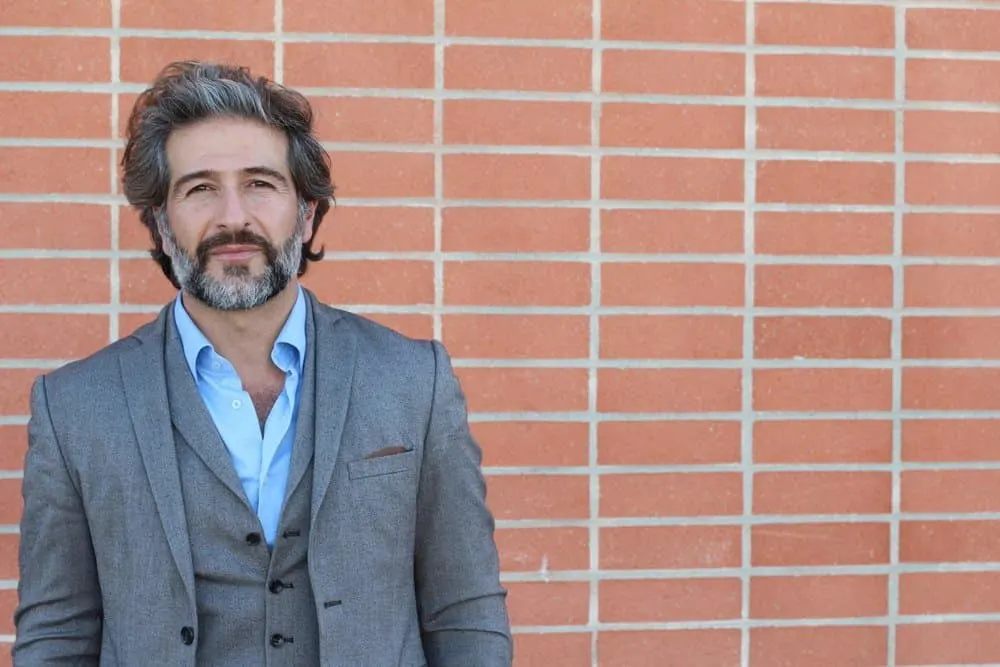
A short boxed beard is often the first style I go for in these lists.
Why?
Because of its incredible simplicity.
It could quite easily be confused for just a classic short beard with hair on the chin, cheeks, and mustache.
But there’s a very distinct difference – the cheek lines.
With a short boxed beard, the cheek lines are lowered, with a characteristic downslope. They usually meet the corner of the mouth on either side.
It almost looks like a chinstrap but isn’t quite that low.
These characteristic lowered cheek lines do bring some benefits.
For one, they expose and give prominence to the cheekbones. This may be appealing for men who are looking for more definition.
Shaping the cheek lines like this is a great way to contour the cheekbones. In fact, it’s just a great way to add some angles, lines, and structure to the lower half of the face.
But having said all of this, it really doesn’t add much time or effort to your grooming routine.
Yes, you’ll still have to stick with the rest of your habits. The neckline will need to be neat and well-defined. You’ll need to trim down regularly and evenly.
But lowering the cheek lines is such a simple addition to your trimming routine, yet has such a significant effect on the overall aesthetic.
If you’re looking to branch out from a basic, classic half-inch beard, the short boxed beard may be ideal.
2. Extended Goatee
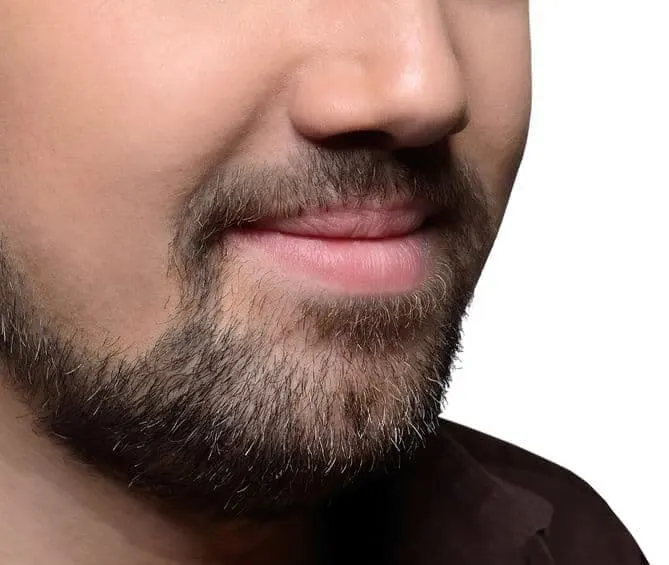
Goatees are fantastic. There are just so many to choose from, each of them with their own subtle nuances and strengths.
At its very core, a “goatee” is any style where there’s hair on the chin but not on the cheeks.
There may or may not be a mustache.
Stick to this definition and you’ll always be able to recognize a goatee from a different style. The hard part is being able to tell the difference between goatee variations.
Here’s one you should really know about.
The “extended goatee” is a connected goatee style. This means that the mustache and chin beard are connected to each other and encircle the mouth.
What makes it an “extended goatee” as opposed to just a basic “full goatee” is the fact that the bottom edges extend up the lower jawline just a little.
As you can see from the picture, the lowest part of the goatee tails backward and upward along the jaw on either side.
Not much, but just enough to be noticeable.
It’s very subtle but does make a difference. The main difference is that it adds a bit of definition to the jawline. This is something that a standard goatee style often doesn’t do.
Goatees add prominence, strength, and length to the chin. That’s what they’re known for.
But an extended goatee will do all of this and add some definition to the first part of the jawline as well.
The maintenance requirements are a little higher when compared with a short boxed beard, for instance.
Yes, you’ve ultimately got less hair to deal with.
But you’ve still got to make sure the goatee is evenly trimmed and symmetrical. Shaping any goatee style effectively does take practice.
Once you’ve got the hang of it, however, the results are often worth the effort.
3. Short Beard With Sharp Transition
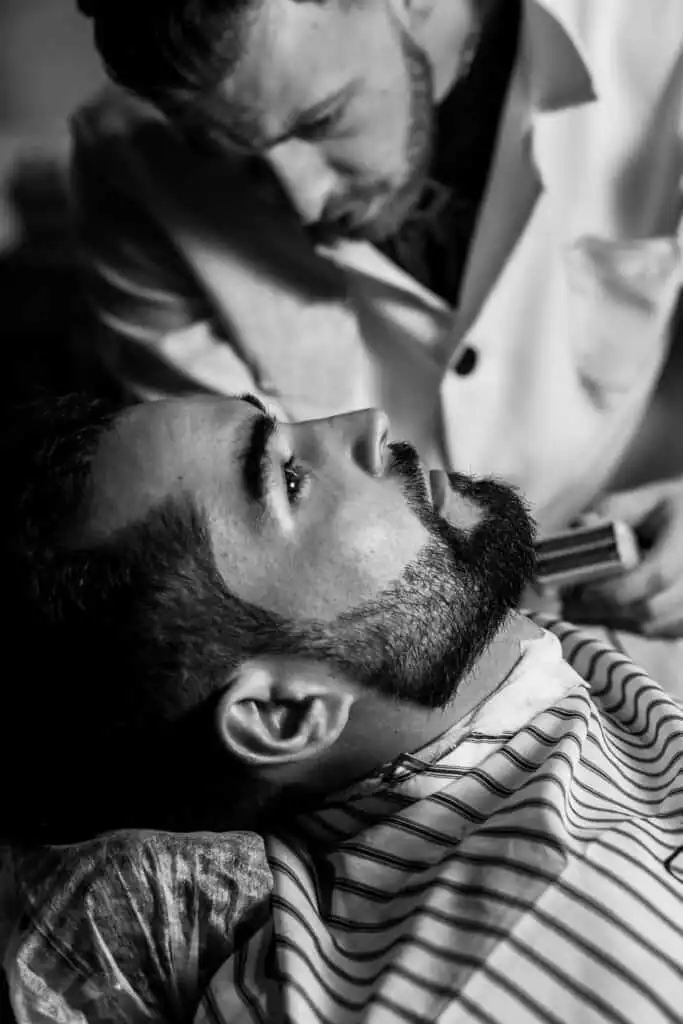
Here’s an interesting one. It may not be the most “beginner-friendly”, but it’s definitely one to aspire to if you’re into it.
One of the benefits of a half-inch beard is that you’ve got enough hair there to vary the length in different parts of the beard.
Although this can sometimes look awkward, when it’s done properly, varying the length can add a lot of nice contrast. It can make the style look a lot more unique.
As you can see from this picture, there’s a sharp transition around the level of the mouth. A hard-line is formed where the hair shifts from long to short.
No fades or tapers – it’s a very intentional shift.
This is definitely possible with a half-inch beard. For example, you could leave the long part of the beard at half an inch, with a sudden transition to stubble partway up the cheek.
Combining it with a fade hairstyle like this is very effective. The shorter, higher part of the beard blends seamlessly into the faded sides of the undercut.
This style really does need the assistance of a professional. If you’re into it, ask your barber whether they’d be able to pull this one off for you.
A sharp transition such as this does add a lot of strength and structure to the lower jaw and chin.
4. The Goatee With Chinstrap Beard

Ah, the goatee with chinstrap style.
It may not be everyone’s favorite, but it’s so difficult to leave out.
The chinstrap is undoubtedly popular, although potentially not as popular as it used to be.
Essentially, a chinstrap beard is a strip of hair that runs along the entire lower jawline. Yes, from ear-to-ear.
It’s got a very characteristic look, particularly when a chinstrap is styled on its own without any other hair on the face.
Its main benefit is that it adds a lot of definition to the jawline. You’ve essentially got a line that runs from one end of the jaw to the other.
This adds a lot of definition and contouring to the lower jawline. It makes it a good option for men whose faces have more curvature than lines or angles.
In other words, rounder faces.
But its versatility can’t be denied. It often works with many different face shapes, some round, some long, and some angular.
It’s just worth bearing in mind that a chinstrap will make the angles of the lower jaw more prominent.
If this is something that’s already quite prominent, you may not want to exaggerate it too much.
The goatee with chinstrap combination includes a full goatee, with a connected mustache and chin beard.
But what makes it unique is the addition of a chinstrap from ear-to-ear.
5. The Goatee

This is a full goatee.
It’s a “connected” goatee style because the mustache and chin beard are connected to each other.
The soul patch flows down and blends into the chin beard below it.
With a half-inch beard, you’ve got just about enough length to style the mustache in slightly more interesting ways.
You may be able to pull off a handlebar if you use a bit of beard balm (if you’ve got the length to pull this off.
Overall, it’s hard to go wrong with a full goatee.
Grooming Tips For The Half-Inch Beard
Now that you’ve seen a few examples of what can be done with this beard length, here are some grooming tips that’ll serve you well no matter what style you choose to go for.
1. Start Brushing
It’s time.
After around 4 weeks of growth, you really should consider starting to use a boar bristle beard brush.
This may well tie up nicely with the half-inch landmark.
The benefits of beard brushing are far-reaching.
It may well mean the difference between scruffy and sophisticated.
A boar bristle beard brush will train the beard to grow in your desired directions. Straighter, flatter, and in general, downward.
Over time, you’ll find that you need to brush less for the same effect. That’s the main benefit of starting early. The training starts earlier.
It’s also great for re-distributing natural oils and sebum that would otherwise clog up the roots and cause greasiness and patchiness.
Redistributing this stuff throughout the beard leads to a nice shine as opposed to greasiness.
2. Don’t Overuse Products
The beard grooming market is huge.
There are so many different toys and products you could potentially choose from.
You’ve got brushes, combs, waxes, balms, shampoos, pomades, pastes, oils, and so on.
As an aspiring and excited beardsman, it’s easy to get carried away. Before you know it, you’ve got a cabinet filled with grooming items you don’t even know the name of.
Don’t make this mistake.
Adopting a minimalist approach to men’s grooming is often the best option.
Stick to the basics. Other than a decent beard trimmer, get yourself a good boar bristle beard brush, a couple of gentle beard oils, and potentially a beard balm.
Some beard shampoo would also serve you well.
With a half-inch beard, you really shouldn’t need anything else. It’s not long enough to require a beard comb.
Plus, a styling product stronger than beard balm such as beard wax would probably be too much.
Even beard shampoo shouldn’t be overused. Use it twice a week at a maximum. Anymore more than that and you may risk drying out the beard too much.
In general, with facial hair of this length, washing the beard with water alone should be enough for most days of the week.
Stick to a few products that actually serve your beard well and forget the rest for now.
3. Shave Outside The Borders
By borders, I mean the cheek lines and the neckline.
These borders should be maintained as a priority. They really do make the difference between amateur and serious beardsmen.
The neckline is the border between the neck hair and the neck skin. When it isn’t maintained, you’re left with a layer of neck hair crawling toward the chest.
This is always undesirable.
When you’ve got a half-inch beard, what you’ve got to remember is that the chin beard isn’t long enough to hide the neck hair.
The neckline will definitely be visible and because of this, it needs to be well-defined and carefully maintained.
It needs to lie at the correct height – not too high and not too short.
A neckline that’s too high leads to an awful double-chin appearance that’s definitely worth avoiding.
Leave it too low and you might as well not do it at all.
The cheek lines should be well-defined but still look natural. Sharpening up your natural cheek line shape is usually the best option.
Once you’ve trimmed your borders, it’s important to shave outside them.
In other words, shave beneath the neckline and above the cheek lines. This is what will give you that clean-cut, neat finish and intentional look.
Although a beard trimmer can trim very short when used without any length guards, you’ll still be left with very short stubble at the end.
To get the sharpest finish, you’ll want to shave using a manual razor or electric shaver to really get the best finish.
This is assuming you want that. There are, of course, men who prefer an au naturale look and would rather not do this.
Each to their own. There’s plenty of room in men’s style for subjective opinion and personal preference.
But for most men, shaving outside the borders will give them exactly the look they’re going for.
4. Get To Know Your Barber
With a beard this short, a lot of men don’t even bother asking their barber about it.
The relationship they have with their barber is strictly to do with their hair and not their beard.
But it’s important to realize that it’s long enough.
A half-inch beard is long enough to justify a few conversations with your barber. Ask them what they’d recommend.
Should you go for a goatee? What about tapering it into the sides?
How about a line-up?
You may well find that it’s worth paying that little bit extra to allow your barber to really take that short beard to the next level.
After trying this, you may well disagree and be perfectly content with managing it on your own.
After all, you may not be doing anything too fancy with it.
It’s just something to think about. Getting an expert opinion is never a bad idea (assuming they actually know what they’re doing when it comes to facial hair).
Conclusion
There you have it.
Hopefully, everything you wanted to know about this glorious length of facial hair.
Simple, subtle, yet incredibly versatile.
Enjoy.
Ready Sleek founder. Obsessed with casual style and the minimalist approach to building a highly functional wardrobe. Also a fan of classic, vintage hairstyles.

